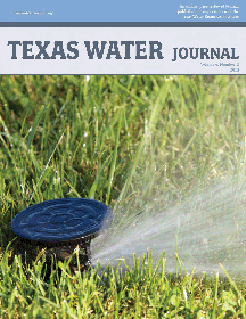Abstract
Water management in Texas is increasingly salient as the population grows, water supplies continue to be taxed and the planet continues to warm, resulting in more severe, widespread, and frequent droughts in the state. Public support, though, is often essential for governments to enact large-scale projects, like those that may be needed to tackle water management issues. Given the challenges facing the state of Texas, surprisingly few studies explore public attitudes, preferences, and risk assessments about water-related resource allocations. Will the public act to direct or limit the actions of its elected officials on water issues? Is the public ready to consider policies, regulations, and expenditures concerning the potential impacts of increased drought frequency on Texas water resources? We report the results of 2 public opinion surveys of the citizens of Texas that focused on water management and drought issues. We find that the public is willing to support government efforts to manage water, but not if these efforts negatively affect the environment or agriculture.
Citation: Stoutenborough JW, Vedlitz A. 2013. Public attitudes toward water management and drought in Texas. Texas Water Journal. 4(2):47-61. Available from: https://doi.org/10.21423/twj.v4i2.6354.
References
Banner JL, Jackson CS, Yang Z-L, Hayhoe K, Woodhouse C, Gulden L, Jacobs K, North G, Leung R, Washington, W, Jiang X, Casteel R. 2010. Climate change impacts on Texas water: A white paper assessment of the past, present and future and recommendations for action. Texas Water Journal [Internet]. [cited 2013 September 22] 1(1):1-19. Available from: http://journals.tdl.org/twj/index.php/twj/article/view/1043/740
Blank J, Henson J. 2013, March 14. Water not floating to top with Texas voters [Internet]. Austin (Texas): The Texas Tribune; [cited 2013 September 22]. Available from: http://www.texastribune.org/2013/03/14/water-not-floatingtop-tx-voters/
Burstein P. 2010. Public opinion, public policy, and democracy. In: Leicht KT, Jenkins JC, editors. Handbook of politics: state and society in global perspective. New York (New York): Springer. p. 63-79.
[EPA] U.S. Environmental Protection Agency. 2002. The clean water and drinking water infrastructure gap analysis. Washington (District of Columbia): U.S. Environmental Protection Agency. EPA-816-R-02-020.
[EPA] U.S. Environmental Protection Agency. 2006. Growing toward more efficient water use: linking development, infrastructure, and drinking water policies. Washington (District of Columbia): U.S. Environmental Protection Agency. EPA-230-R-06-001.
[EPA] U.S. Environmental Protection Agency. 2013. Outdoor water use. Washington (District of Columbia): U.S. Environmental Protection Agency. EPA-832-F-06-005.
Fannin B. 2011 August 17. Texas agricultural drought losses reach record $5.2 billion [Internet]. College Station (Texas): Texas A&M AgriLife Today; [cited 2013 September 22]. Available from: http://today.agrilife.org/2011/08/17/texas-agricultural-drought-losses-reach-record-5-2-billion/
Hmelo-Silver CE. 2004. Problem-based learning: what and how do students learn? Educational Psychology Review. 16(3):235-266.
[IPCC] Intergovernmental Panel on Climate Change. 2007. Climate change 2007: impacts, adaptation and vulnerability. (Contribution of Working Group II to the Fourth Assessment Report of the Intergovernmental Panel on Climate Change, 2007). New York (New York): Cambridge University Press. 976 p.
Lubick N. 2004. Western aquifers under stress. Geotimes [Internet]. [cited 2013 September 22]. Available from: http://www.geotimes.org/may04/feature_westernaq.html
McCully P. 2001. Silenced rivers: the ecology and politics of large dams, enlarged and updated edition. New York (New York): Zed Books. 416 p.
[NDMC] National Drought Mitigation Center. 2013. Types of drought impacts [Internet]. Lincoln (Nebraska): The National Drought Mitigation Center at the University of Nebraska-Lincoln; [cited 2013 September 22]. Available from: http://drought.unl.edu/DroughtforKids/HowDoes-DroughtAffectOurLives/TypesofDroughtImpacts.aspx
Ostrom V. 2007. The intellectual crisis in American public administration. 3rd edition. Tuscaloosa (Alabama): University of Alabama Press. 230 p.
Seager R, Ting M, Held I, Kushnir Y, Lu J, Vecchi G, Huang H-P, Harnik N, Leetmaa A, Lau N-C, Li C, Velez J, Naik N. 2007. Model projections of an imminent transition to a more arid climate in Southwestern North America. Science 316(5828):1181-1184.
Trostle R. 2008. Global agricultural supply and demand: factors contributing to the recent increase in food commodity prices. Washington (District of Columbia): USDA Economic Research Service. USDA-WRS-0801.
Yu J, Norwine J, Bingham R, Tebaldi C. 2006. Potential climatic deterioration in semiarid subtropical South Texas. Geography Online [Internet]. 6(2). Available from: http://www.siue.edu/GEOGRAPHY/ONLINE/gov6n2.html

This work is licensed under a Creative Commons Attribution 4.0 International License.
Copyright (c) 2013 James W. Stoutenborough, Arnold Vedlitz

